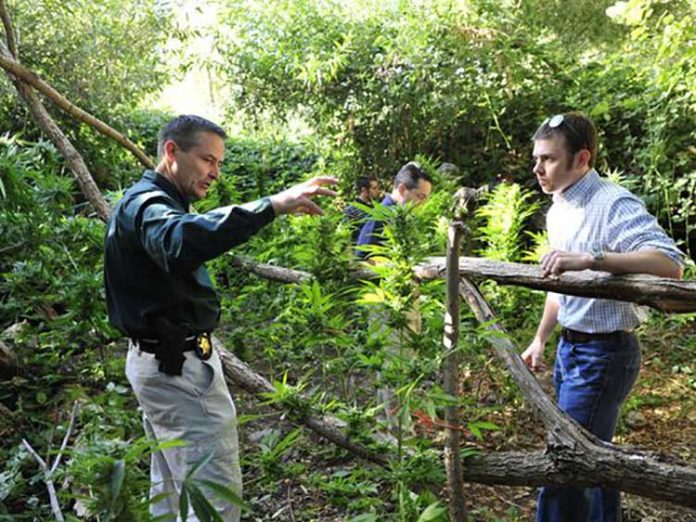Illegal marijuana grows hidden within public lands can be detrimental to the environment and families living close by.
Now, local and state leaders are taking a stand.
Law enforcement agencies have joined with experts to highlight the damage that marijuana grows have on national forests, the wildlife that inhabit them, and the streams and waterways that flow through them.
“The illegal growth of cannabis is undeniably a major threat to public safety. It is also killing our wildlife, polluting our waters, and destroying our public lands,” said Attorney General Xavier Becerra. “At the California Department of Justice, we work hard with our federal and local law enforcement partners to combat illegal marijuana planting under our Campaign Against Marijuana Planting program.”
Although local, state and federal agents often work together, they plan to increase their efforts to eliminate environmental crimes.
“We’re all on the same sheet of music,” said Karen Escobar, assistant U.S. Attorney based in Fresno. “We are focusing on eradicating mountain grows on public lands and eliminating the harmful effects.”
In 2009, Escobar noticed an upward trend occurring in illegal outdoor grows — the use of dangerous chemicals. She was one of the first prosecutors to connect marijuana grow cases with environmental crimes.
“There’s always been a problem with marijuana grows on public lands,” she said. “But the one thing that has changed is the use of illegal pesticides.”
Escobar has successfully prosecuted dozens of cases involving marijuana grows in the Sequoias, both the park and the forest.
In the last eight years, law enforcement agents have also seen the use of pesticides increase.
The damage is widespread and long-lasting, officials said.
In August 2017, Tulare County sheriff’s deputies destroyed nearly 60,000 outdoor marijuana plants. From January to August 2017, deputies shut down 27 illegal grows —eradicating more than 190,264 plants.
In 2016, deputies raided 22 mountain grows.
Park rangers and U.S. Forest Service officials also shut down several grows in Sequoia and Kings Canyon national parks and forest land.
“It truly trashes the environment,” said sheriff’s Lt. Jim Franks.
Those who plant and tend to the illegal grow sites often use toxic fertilizers, pesticides, and rodenticides that end up in soil and eventually in streams. These toxic pollutants are then carried away from the sites and ingested by animals.
Some of those animals are then eaten by people.
The poisons also find their way into water supplies for towns and cities downstream.
While law enforcement has worked for years to eliminate illegal marijuana grows, new data further shows how they cause far-reaching harm to the environment and threaten public safety.
“California now has contaminated water, soil, plants and wildlife due to the clandestine actions of those cultivating marijuana on our public lands,” said Mourad Gabriel, Integral Ecology Research Center co-director. “We are at a precipice where we can either ignore the prologue of the past when public resources were illegally exploited for monetary gain or proactively conserve these national public lands for future generations to use and enjoy.”
Those responsible for the illegal cultivation also leave behind piles of garbage and waste, including PVC pipes, irrigation lines, gardening tools and human waste.
Cultivators also redirect water to the marijuana plants, which dries up streams and reservoirs used by plants, animals and people.
Something has to be done, officials said.
“Awareness has certainly developed,” Escobar said. “There will be more of a consideration given to charging environmental crimes in addition to drug crimes.”
One marijuana plant uses about six gallons of water per day, Gabriel said. The 1.1 million illegal marijuana plants removed in California in 2016 would have used approximately 1.3 billion gallons of water.
California was in the tail-end of a five-year drought in 2016.
“People go up to the mountains to grow because they don’t have to pay for the land or the water,” Franks said. “For larger drug dealers, this is a win. That’s why it’s not going away.”
Franks is confident bringing together local, state and federal resources will help eradicate the problem faster, he said.
“I’ve seen what it can do to the environment, we can’t just surrender,” he said. “Money equals resources and once we get those resources, we’ll hit it hard. You can’t just walk away. It’s an ongoing battle.”














